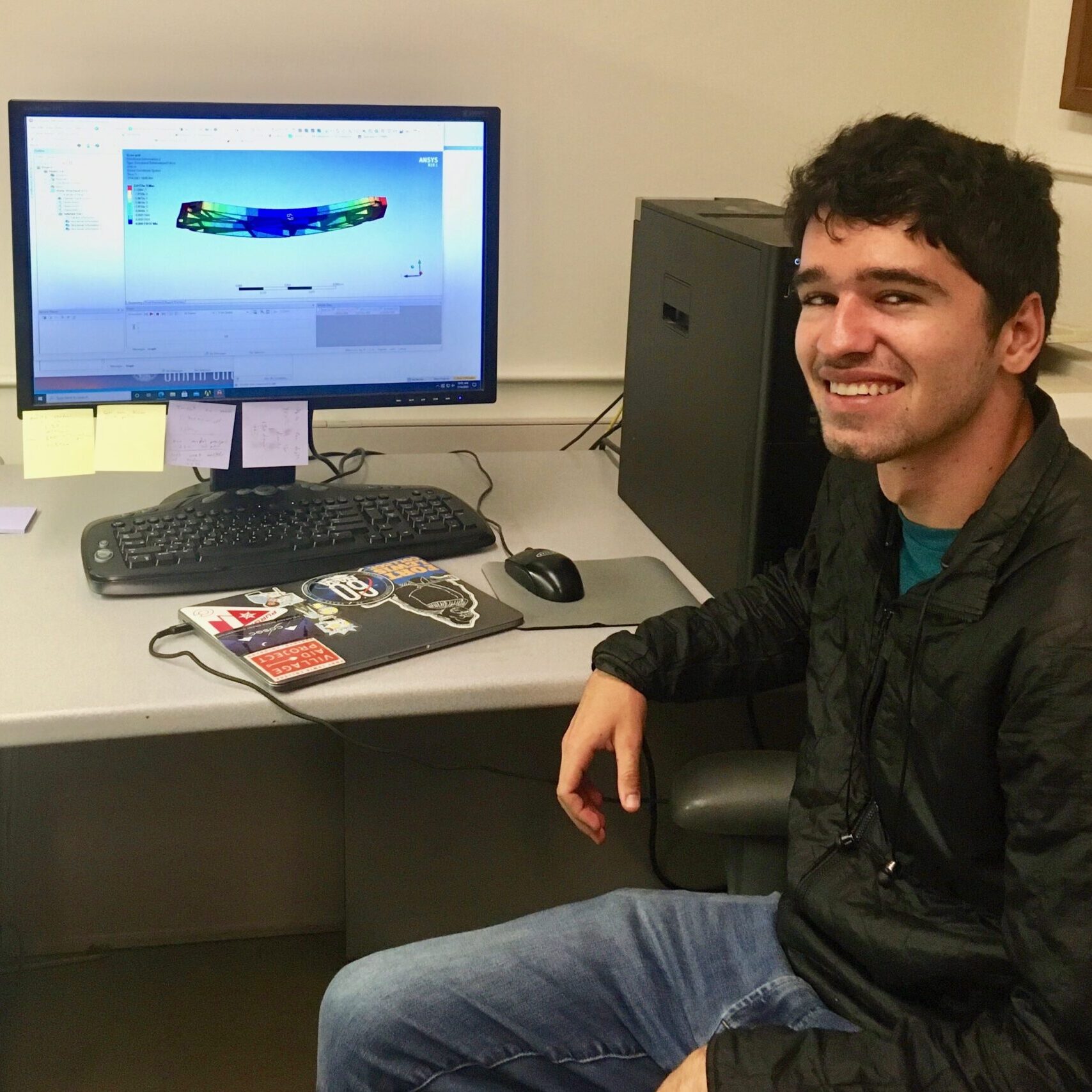
Nikolas Conmy was born and raised in Maui, Hawaii. In 2018 he enrolled at Fort Lewis College in Durango Colorado to study engineering. Nikolas’s passion for engineering came from analyzing mechanical systems as a child and a desire to learn the science behind their construction and material properties. In 10 years from graduation, his goal is to obtain a masters degree and a job working in the automotive or aeronautical industries to create more efficient and sustainable modes of transportation. This interest came from participating in Fort Lewis College’s inaugural rocket club which competed in the 2021 NASA Student Launch. Nikolas enjoys mountain biking, surfing, and landscape photography in his free time around Maui and Durango, Colorado.
Home Island: Maui
High School: Haleaka Waldorf High School
Institution when accepted: Fort Lewis College
Akamai Project: Deformation and Modal Analysis of the SCALES Optical Bench
Project Site: University of California Observatories (UCO) – Santa Cruz, CA
Mentors: Nick MacDonald, Chris Ratliff, Deno Stelter
Project Abstract:
Santa Cruz array of lenslets for exoplanet spectroscopy (SCALES) is a high-contrast lenslets integrated field spectrograph capable of imaging low light spectral exoplanets, that will be installed in the W. M. Keck observatory. The SCALES optical equipment will be attached to an aluminum 6061 optical bench. Mass needs to be removed from the bench in a way that the bench doesn’t lose too much stiffness. Three light weighting methods being considered are to drill holes through the neutral axis of the optical bench, a custom grid cut out of the bottom of the bench to support the areas loaded, or an iso grid. These designs were compared to determine the optimal bench design. These designs were applied to finite element analysis (FEA) models of the optical bench to determine the deformation under gravity, the deformation under optical equipment load. This was used to find the relative angle of tilt of the optics. The natural frequencies were also found for each model. The optimal design suggested by the data is the bench with holes through the neutral axis. This design had the smallest deformation in the vertical direction and the smallest mass. The approximation of the angle of the optics will be used to determine mirror mount adjustments.